One can spend countless days in Venice and never have enough of this magnificent place. Unfortunately, most of us have a limited vacation time. We spend perfect 5 days in Venice, Italy. Experience our adventure with us and hopefully, get inspired to create your own perfect itinerary.
For Essential Guide to Venice: History, Food, Travel Tips and More>CLICK HERE!
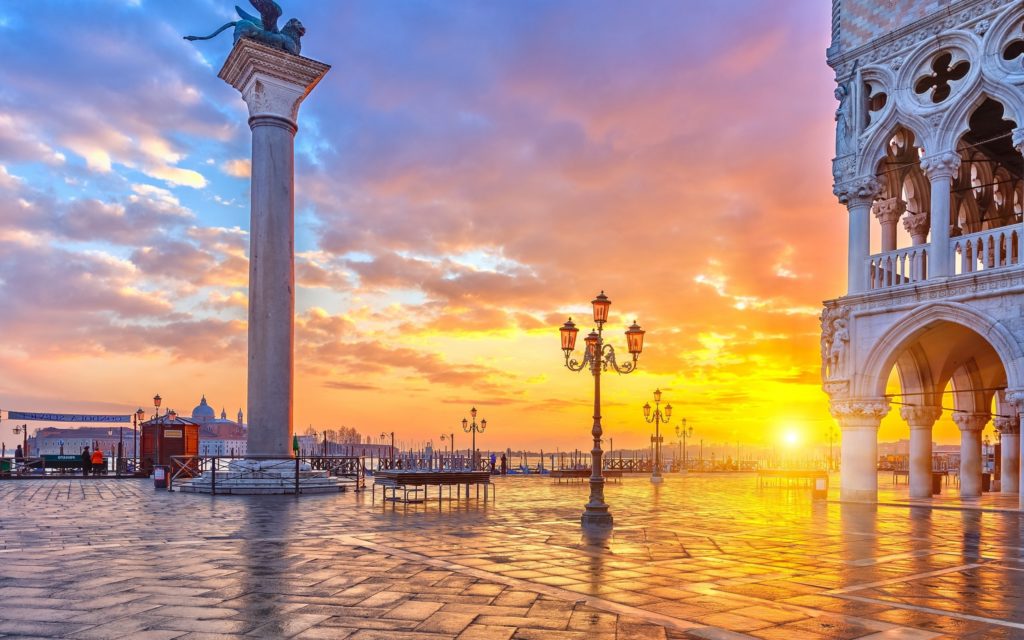
San Marco
Day 1: Arrival
After our delightful experience with Turkish Airlines Business Class aboard B777-300ER we arrived at Marco Polo International Airport after 7 pm local time. If you choose morning arrival during a high season there is a good chance your hotel will be fully booked and you will have to wait for your room to be ready till oficial check in time.

Turkish Airlines
On the other hand, if you arrive in the middle of the day, you will likely deal with major boat traffic between the airport and the center of Venice as, well as the gridlock at the Grand Canal and the long wait to dock by your hotel (each hotel can only accommodate one boat taxi at the time). Arriving in the evening gave us distinguished advantage of avoiding those problems and ability to view Venice during the sunset.

water-taxi
Water taxi can be booked online or after arrival upon exiting customs area. Fees change, so check online, but for the party of 2 with 2 pieces of luggage going rate was 120 euros, and you could save 10 Euros by booking online, which is what we did. There is a cheaper vaporetto style (public water bus) service for less than 30 euros per person, however arriving by private boat is a much better experience and worth every penny.
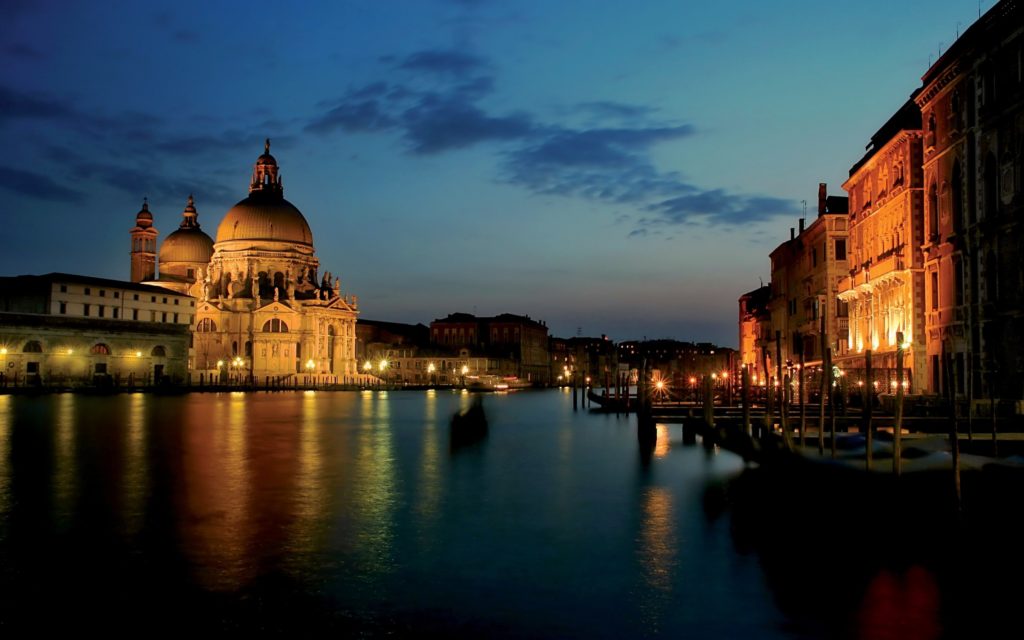
beauty-night-in-venice
The ride from the airport in the water taxi was amazing, as it happened to be during a sunset over Venice. We took some magical photos that I will be sharing with you on my blog, Facebook and Instagram. It culminated with the arrival at the dock of the Gritti Palace, Luxury Collection Hotel right after the sunset. I have stayed at many magnificent properties around the world, but arriving at the deck of the Gritti during dinner time was so far grandest way to enter any hotel.
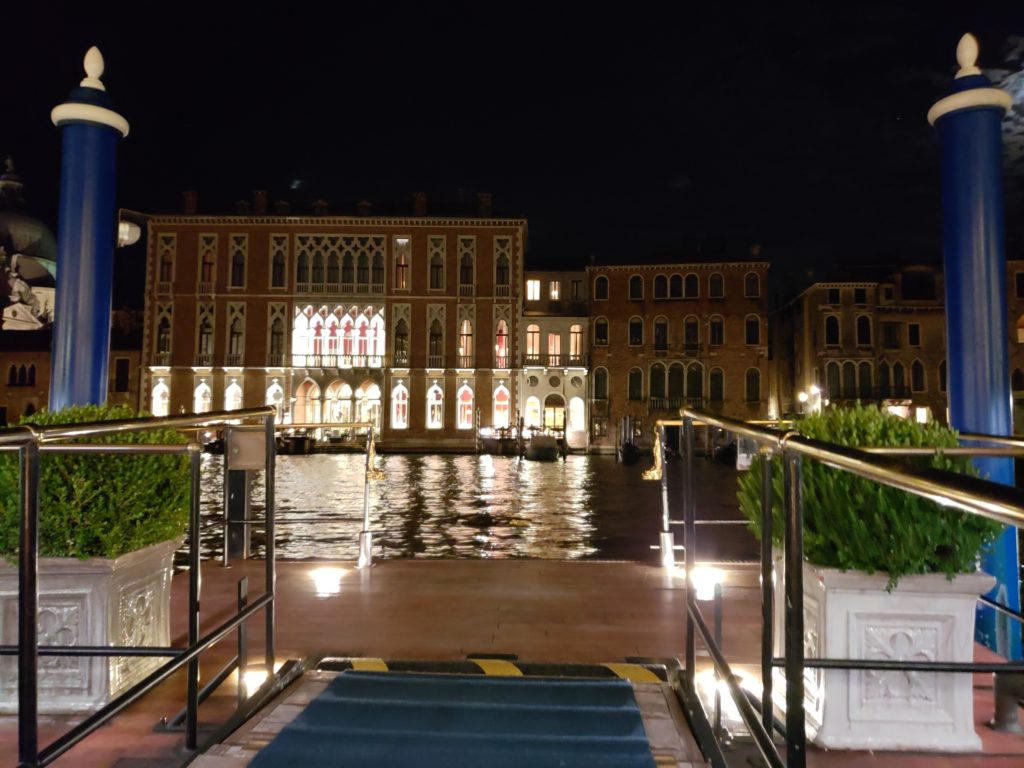
Gritti-deck-evening
Accommodations
The Gritti Palace is more than a hotel, it is a destination. Located at the entrance to the Grand Canal, it features incredible views with history to match.

the Gritti Palace
The word “amazing” doesn’t do a justice to our suite. I felt exactly how I should in the property like the Gritty Palace. It was breathtaking. Two spacious rooms with 1 and a half baths. Floor to ceiling marble in bathrooms, two desks for catching up on my writing, as well as plenty of great albums and books about Venice and Italy. It felt like home from the moment I stepped into our suite. My only regret was that we will spend so little time in this room while exploring Venice.
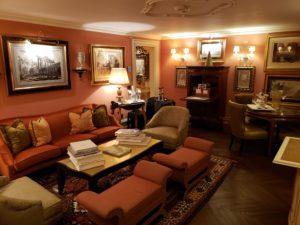
Gritti-livingroom
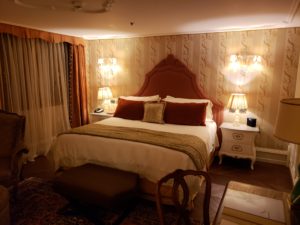
Gritti-Bedroom
Cocktails by the Grand Canal
After refreshing shower, and still full from wonderful meal experience aboard Turkish Airlines Business class, we decided to relax on the deck of our hotel with drinks and take in the views of the Grand Canal.
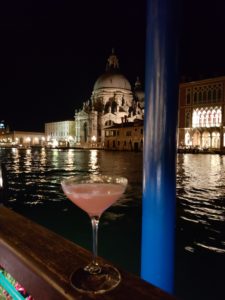
Memories of Venice
The Gritti Terrace continues to be the social hub of Venice, stretching along the waterfront on one of the most beautiful sections of the Grand Canal. We truly enjoyed this bar with killer views of the Grand canal and Santa Maria della Salute, great Bellini and local wines.
Day 2
Our morning started with an early breakfast along the postcard perfect views of Venice. Once again Gritti Palace did not disappoint.
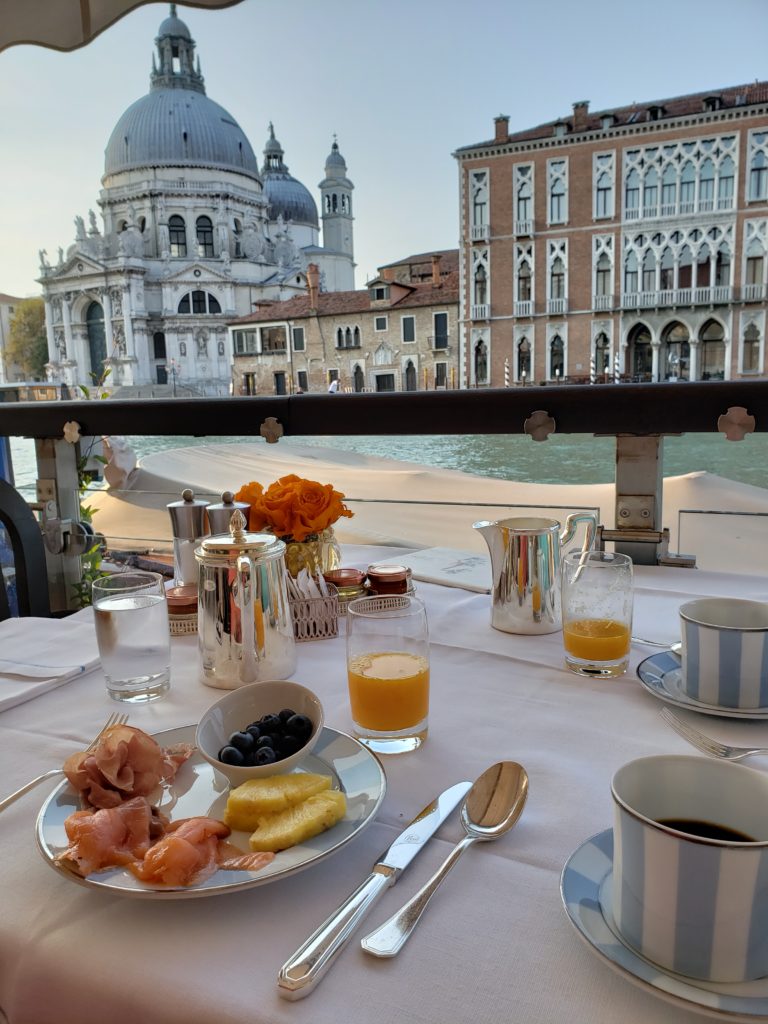
breakfast-at-the-Gritti
For our exploration of Venice I booked an all day walking tour (7.5 hours) through Walks of Italy. It included excellent introduction by the local guide to the city on the water with visit to key sights, ride in the gondola, and skip the line entrance to San Marco Basilica and Doge’s Palace.
Word of warning: in the Summer heat 7.5 hours on your feet might not be for everyone. We lost 50% of participants before the end of the tour.
TOUR: EXPLORING THE HIDDEN BEAUTY AND FASCINATING HISTORY OF VENICE
Our day started as all great days in Venice do; with a stroll through the quiet back streets and bustling markets of the city. We met our expert local tour guide and 6 other people for an intimate walking tour of the city.
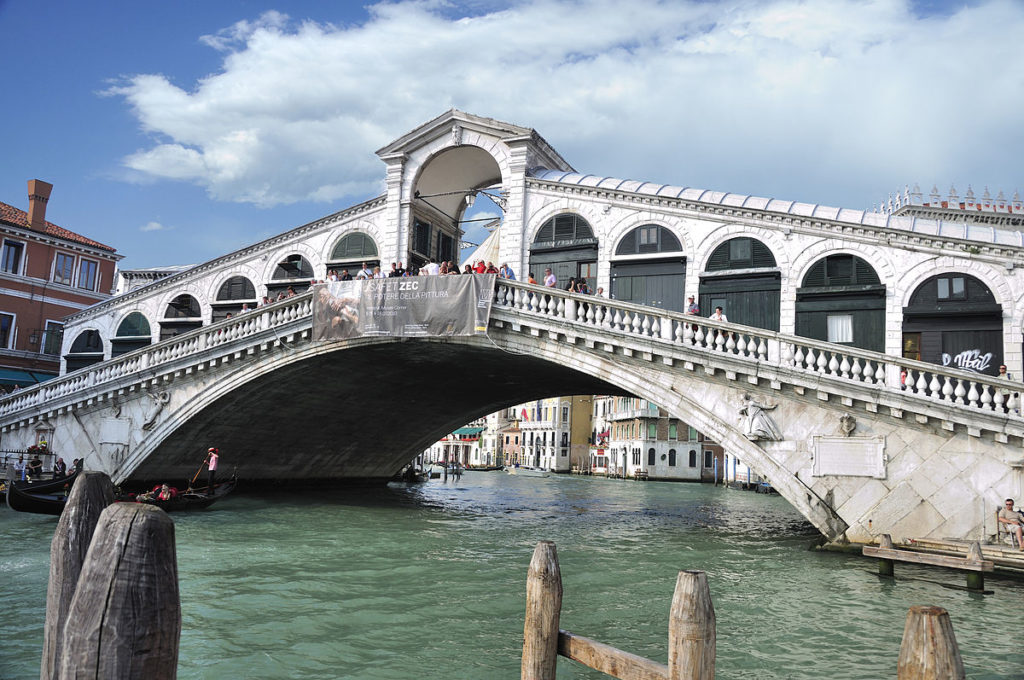
Grand Canal Rialto Venice
Starting early, at 9am, by Campo San Giacomo di Rialto we got to the Rialto Bridge before the crowds descended, to admire its incredible marble architecture before moving on to the bustling Rialto market. The chefs and mamas of the city were shopping for dinner around this time, so what better time for a stroll through the stalls, with our guide explaining what each strange fish or vegetable is, and how (and why) Venetian cuisine differs from the rest of Italy’s. Throughout our Venice tour she gave us tips on what to eat and where, while you’re in town.
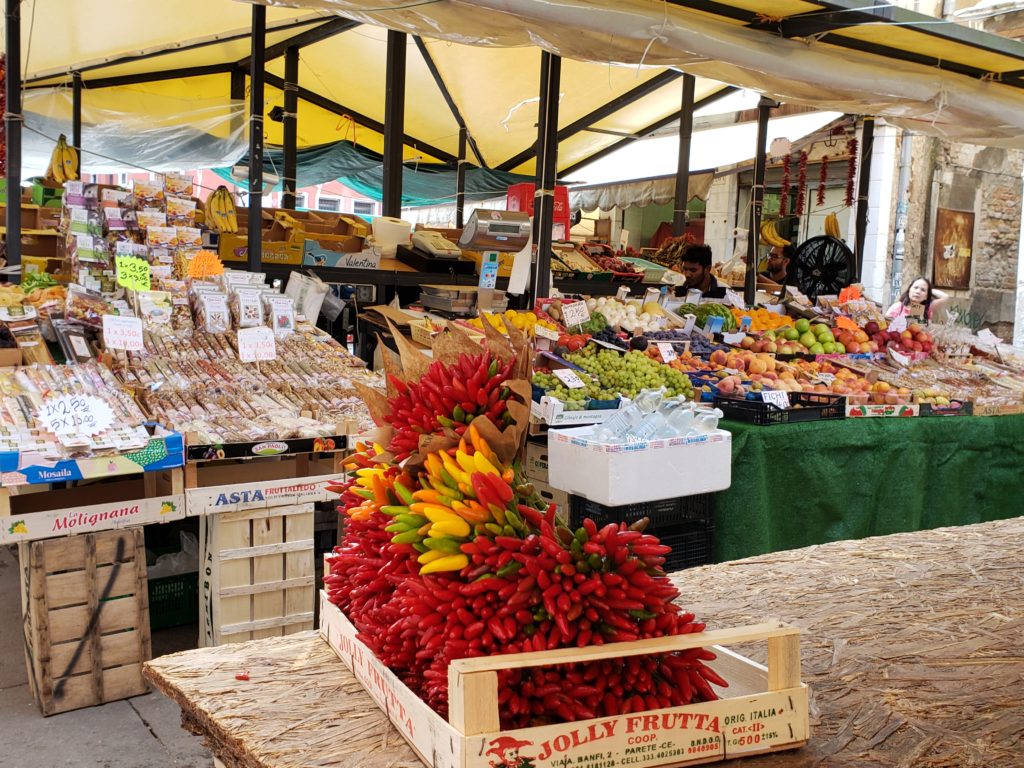
produce market
Our walking tour continued into the atmospheric neighborhoods of the city, across countless bridges and quiet piazzas. Along the way we saw the childhood home of Marco Polo, the Venetian merchant who first told of China; ducked inside San Giovanni Gristosomo to see paintings by Venetian masters Bellini and Sebastiano del Piombo; and discovered how the “Church of Miracles” got its name – plus so much more!
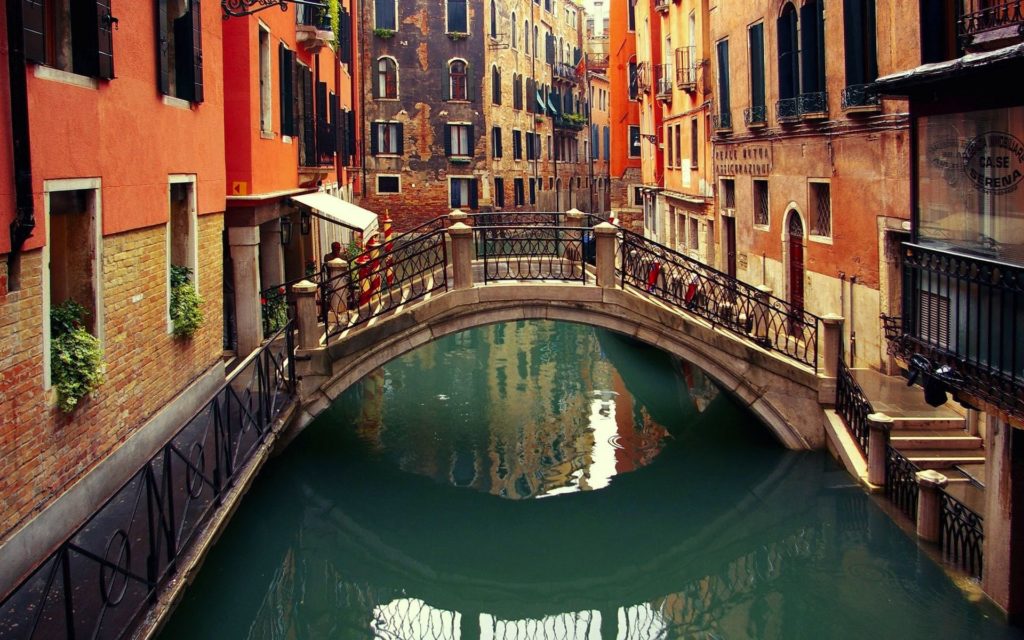
Backstreets of Venice
Our walking tour consciously veered away from the beaten track, taking us to favorite local spots; so we got a taste of the real Venice, as well as the big name attractions.
GONDOLA RIDE ALONG THE GRAND CANAL AND QUIETER BACK CANALS OF VENICE
We couldn’t say we were covering the best of Venice in a day if we didn’t include a gondola ride. After our walking tour we met a local Venetian gondolier and our group was split into different gondolas (max 6 people per gondola) for a ride along the Grand Canal and into the quieter back canals of the city. Ducking under little bridges, we admired ornate palaces and watched the world go by as we sat back and enjoy that quintessential Venetian moment.
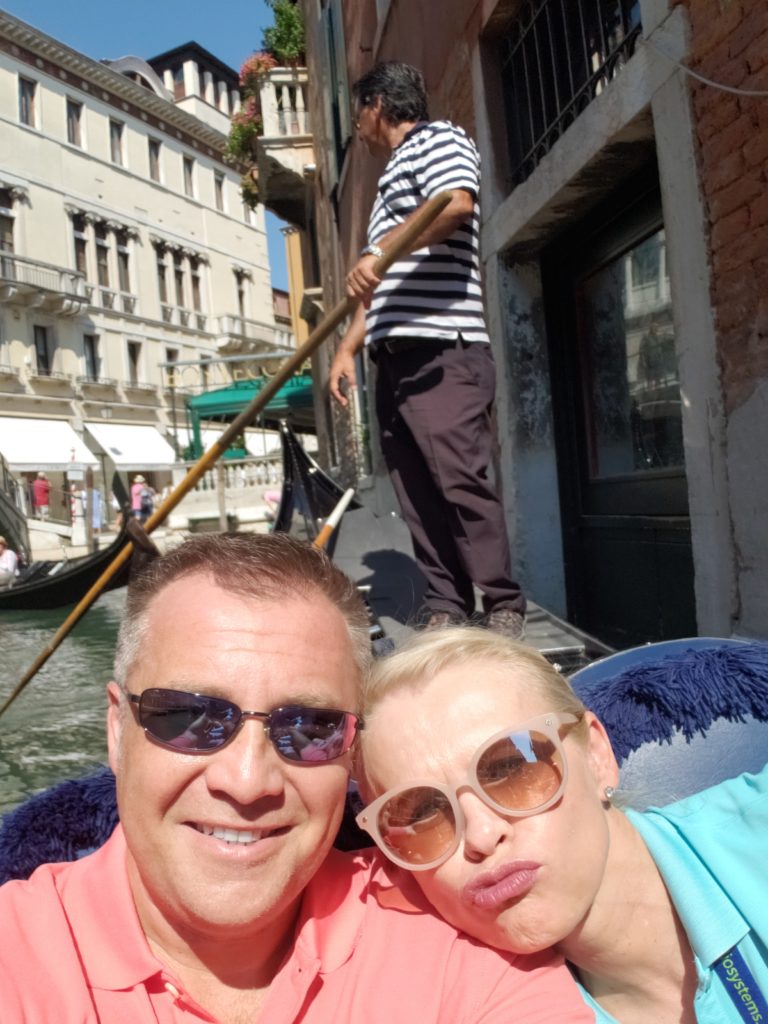
Gondola Ride
With independent Venice gondola rides costing around €80/hour, this half-hour ride, included in the price of our tour, was a bargain.
DISCOVERING THE TOP TWO SIGHTS OF VENICE – ST. MARK’S BASILICA & THE DOGE’S PALACE – ON OUR SKIP THE LINE TOURS
We got an hour break for lunch after our gondola ride, so we enjoyed some cold drinks and gelato, and met back at St. Mark’s Square for the next part of our adventure. With pre-reserved tickets to St. Mark’s Basilica, we saved time wasted in long ticket lines. Inside, our guide pointed out the features of this incredible church, explaining how its east-meets-west architecture came about; the shady means by which the relics of St. Mark came to rest here; and the details in the beautiful gold mosaics on the roof.
Basilica San Marco
This awesome Basilica, built on a Greek cross plan and crowned with five huge domes, is the third church to stand on this site. The first, built to enshrine the body of St Mark in the 9th century, was destroyed by fire. The second was pulled down in the 11th century in order to make way for a more spectacular edifice designed by an unknown architect (1063–94), reflecting the escalating power of the Republic. The basilica continued to be remodelled over the following centuries, and in 1807 it succeeded San Pietro in the sestiere of Castello as the cathedral of Venice; it had until then served as the doge’s private chapel for State ceremonies.
Horses of St Mark
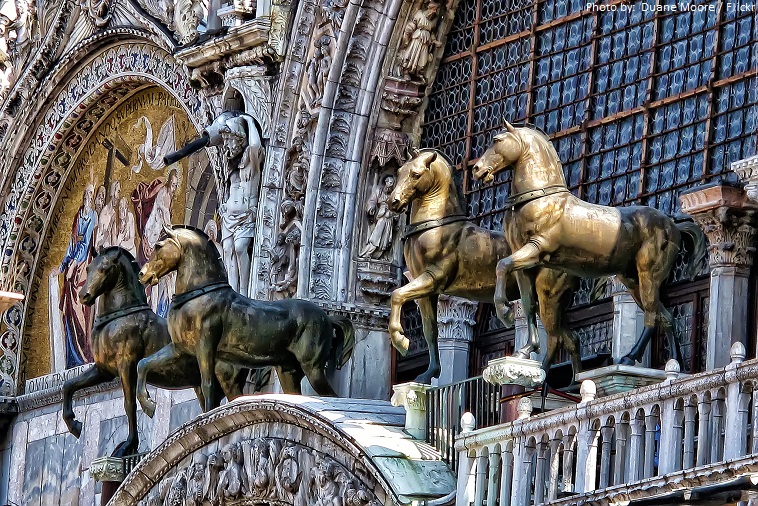
saint-marks-basilica-horses
The four horses are replicas of the gilded bronze originals, now protected inside the Basilica.
The Tetrarchs
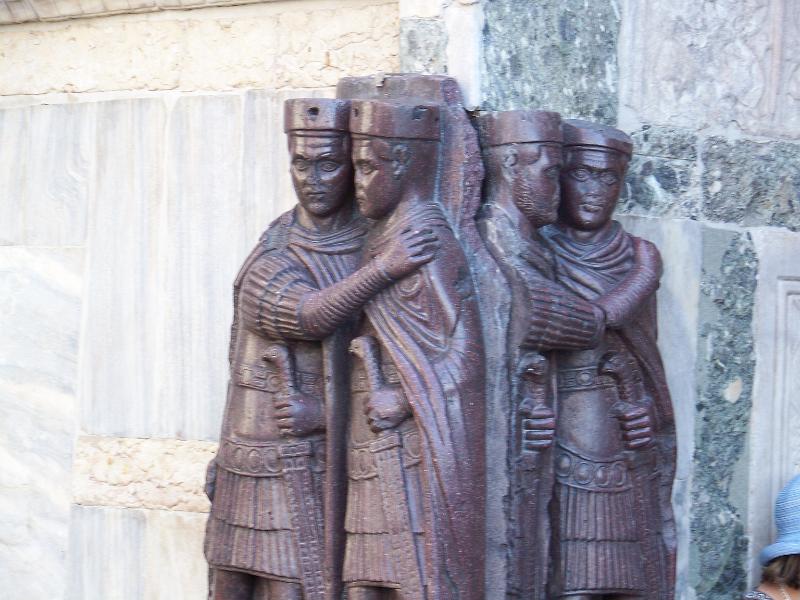
tetrarchs-st-marks-venice
This charming sculptured group in porphyry (4th-century Egyptian) is thought to represent Diocletian, Maximian, Valerian and Constance. Collectively they were the tetrarchs, appointed by Diocletian to help rule the Roman Empire.
Inside the Basilica
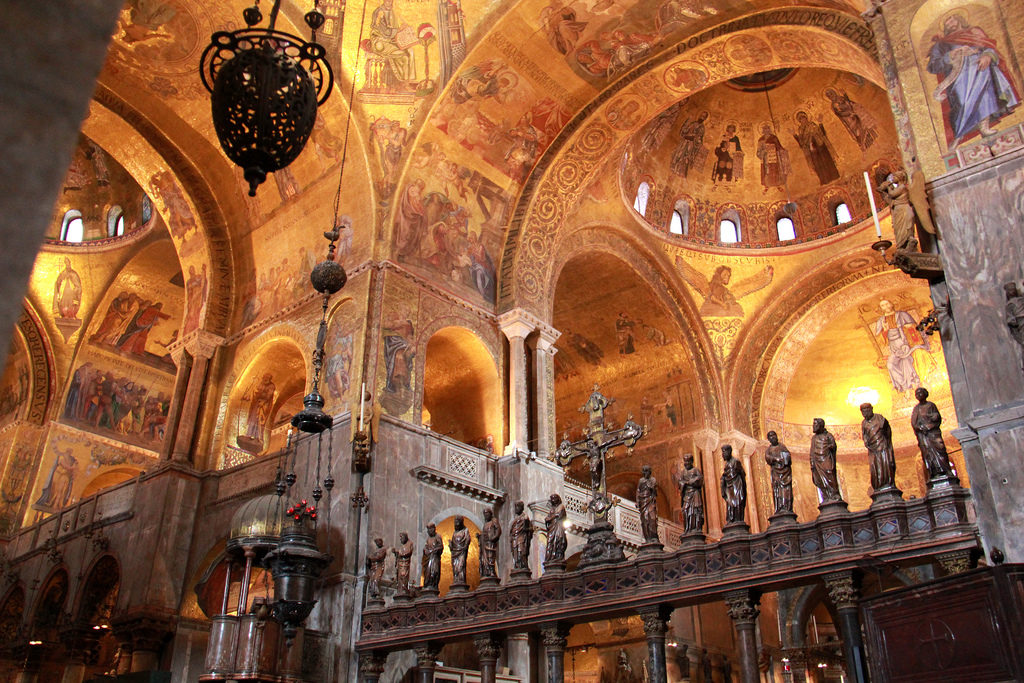
Inside San Marco Basilica
Dark, mysterious and enriched with the spoils of conquest, the Basilica is a unique blend of Eastern and Western influences. This Oriental extravaganza, embellished over a period of six centuries with fabulous mosaics, marble and carvings, made a fitting location for the ceremonies of the Serene Republic. It was here that the doge was presented to the city following his election, that heads of state, popes, princes and ambassadors were received, and where sea captains came to pray for protection before embarking on epic voyages.
Campanile
From the top of St Mark’s campanile, high above the Piazza, visitors can enjoy sublime views of the city, the lagoon and, visibility permitting, the peaks of the Alps.
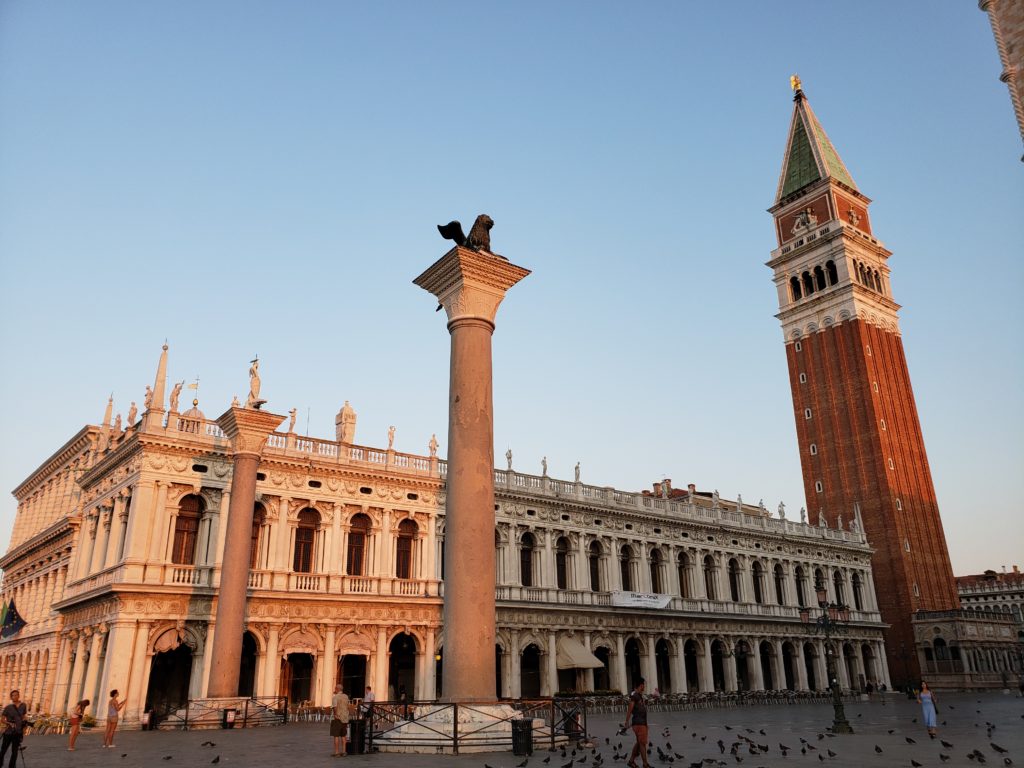
Campanile
It was from this viewpoint that Galileo demonstrated his telescope to Doge Leonardo Donà in 1609. To do so, he would have climbed the internal ramp. Access today is via a lift for which there is usually a queue. Visitors at the top of the tower on the hour should note that the five bells ring quite loudly.
The first tower, completed in 1173, was built as a lighthouse to assist navigators in the lagoon. In the Middle Ages, it took on a less benevolent role as the support for a torture cage where offenders were imprisoned and in some cases left to die. The tower’s present appearance dates from the early 16th century, when it was restored by Bartolomeo Bon after an earthquake.
The tower survived the vicissitudes of time until 14 July 1902, when its foundations gave way and it collapsed. The only casualties were the Loggetta at the foot of the tower and the custodian’s cat. The following year, with the help of many donations, the foundation stone was laid for a campanile “dov’era e com’era” (“where it was and how it was”). The new tower was opened on 25 April (St Mark’s Day) 1912.
Columns of San Marco and San Teodoro
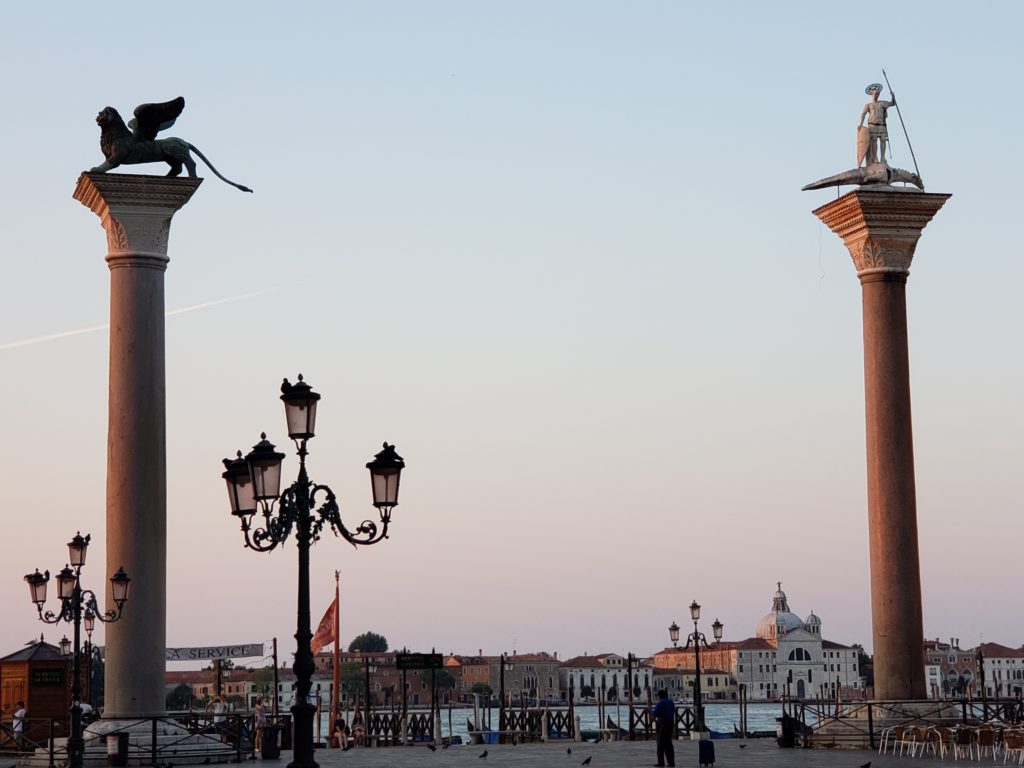
St.Mark and St.Theodore
Along with all the bounty from Constantinople came the two huge granite columns which now tower above the Piazzetta. These were said to have been erected in 1172 by the engineer Nicolò Barattieri, architect of the very first Rialto Bridge. For his efforts he was granted the right to set up gambling tables between the columns. A more gruesome spectacle on the same spot was the execution of criminals, which took place here until the mid18th century. Even today, superstitious Venetians will not be seen walking between the columns.
The western column is crowned by a marble statue of St Theodore, who was the patron saint of Venice before St Mark’s relics were smuggled from Alexandria in AD 828. The statue is a modern copy – the original is kept for safety in the Doge’s Palace. The second column is surmounted by a huge bronze of the Lion of St Mark. Its origin remains a mystery, though it is thought to be a Chinese chimera with wings added to make it look like a Venetian lion.
Doge’s Palace
Our day did not end there though. With pre-reserved skip the line tickets to the Doge’s Palace, we walked straight inside. It’s here that you’ll feel the most benefit for having a local tour guide. Home to some of the city’s most impressive artworks and architecture, Palazzo Ducale is so much more than something pretty to look at. Although it certainly is that, it’s also the historic heart of Venice; a repository for the best stories, from Casanova’s prison break to the Dodge whose face was blacked out of every portrait and painting.
The Palazzo Ducale started life in the 9th century as a fortified castle, but this and several subsequent buildings were destroyed by a series of fires. The existing palace owes its external appearance to the building work of the 14th and early 15th centuries. The designers broke with tradition by perching the bulk of the pink Verona marble palace on lace-like Istrian stone arcades, with a portico supported by columns below. The result is a light and airy masterpiece of Gothic architecture.
Inside the Doge’s Palace
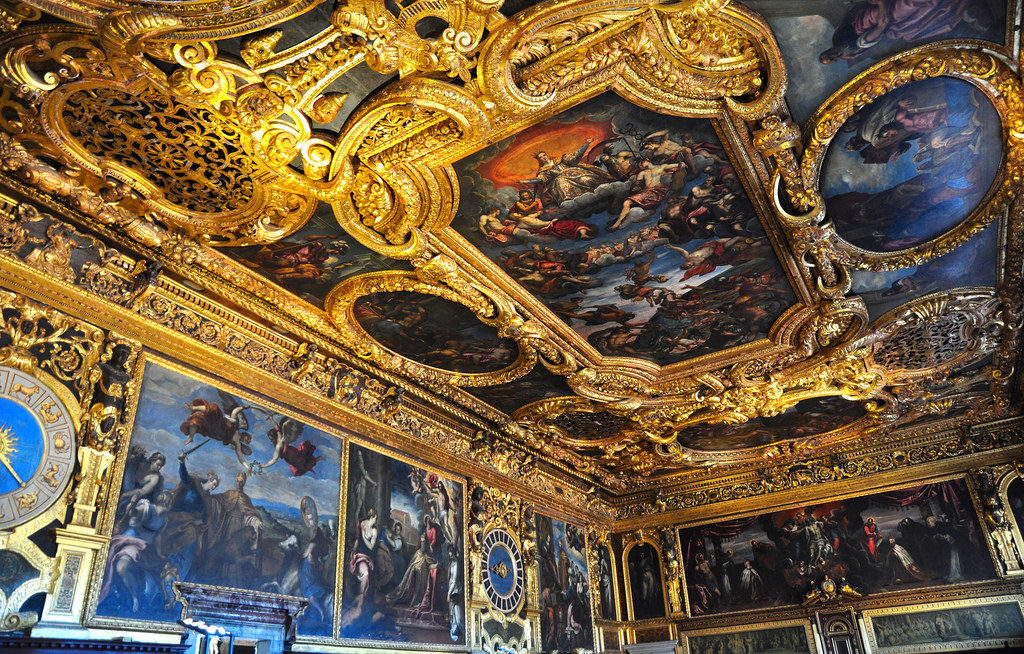
Doges-Palace-Inside
From the early days of the Republic, the Doge’s Palace was the seat of the government, the Palace of Justice and the home of the doge. For centuries this was the only building in Venice entitled to the name palazzo (the others were merely called Ca’, short for Casa). The power of the Serenissima is ever present in the large and allegorical historical paintings which embellish the walls and ceilings of the splendid halls and chambers. These ornate rooms are testament to the glory of the Venetian Republic, and were designed to impress and overawe visiting ambassadors and dignitaries
Torture Chamber
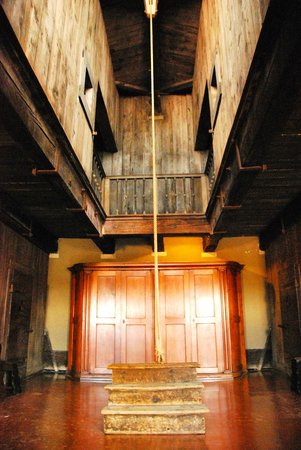
Torture_chamber
“The court of the room of the Cord” recalls the practice of interrogating suspects as they hung by their wrist.
Bridge of Sighs
The famous bridge was crossed by offenders on their way to the State interrogators.
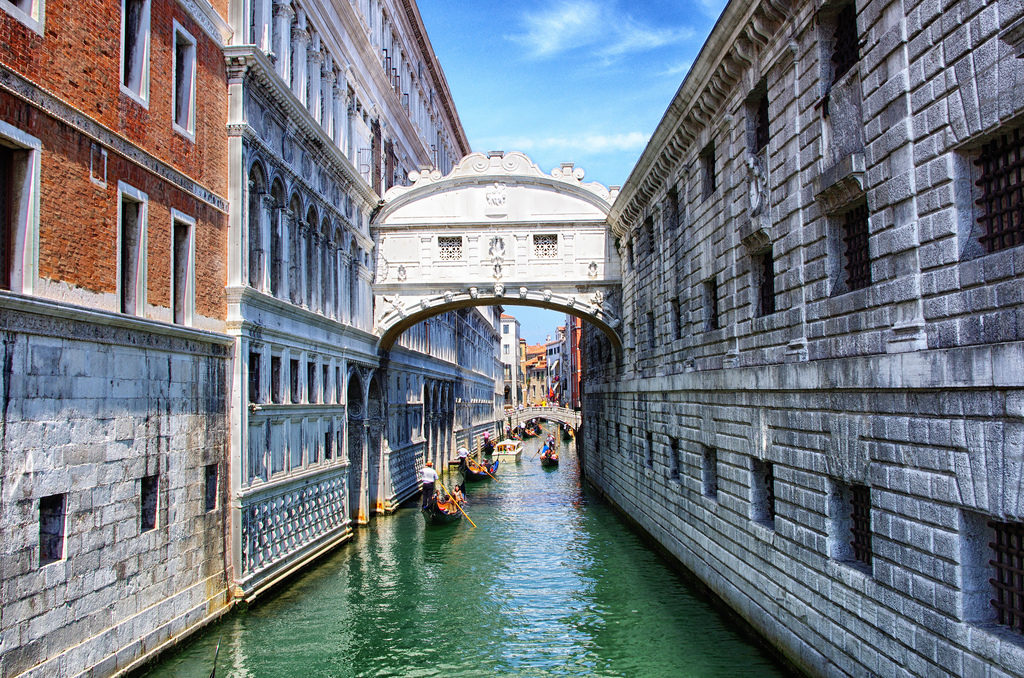
Bridge of Sighs
With our expert guide on hand to tell us the juicy details, plus small groups so you can ask all the questions you want, our Doge’s Palace tour was an unexpected highlight of our Venice visit.
Exhausted from all day walking in the heat of the Summer, we sat for an early dinner at a small restaurant near our hotel, and afterwards retired to our room for much deserved sleep.
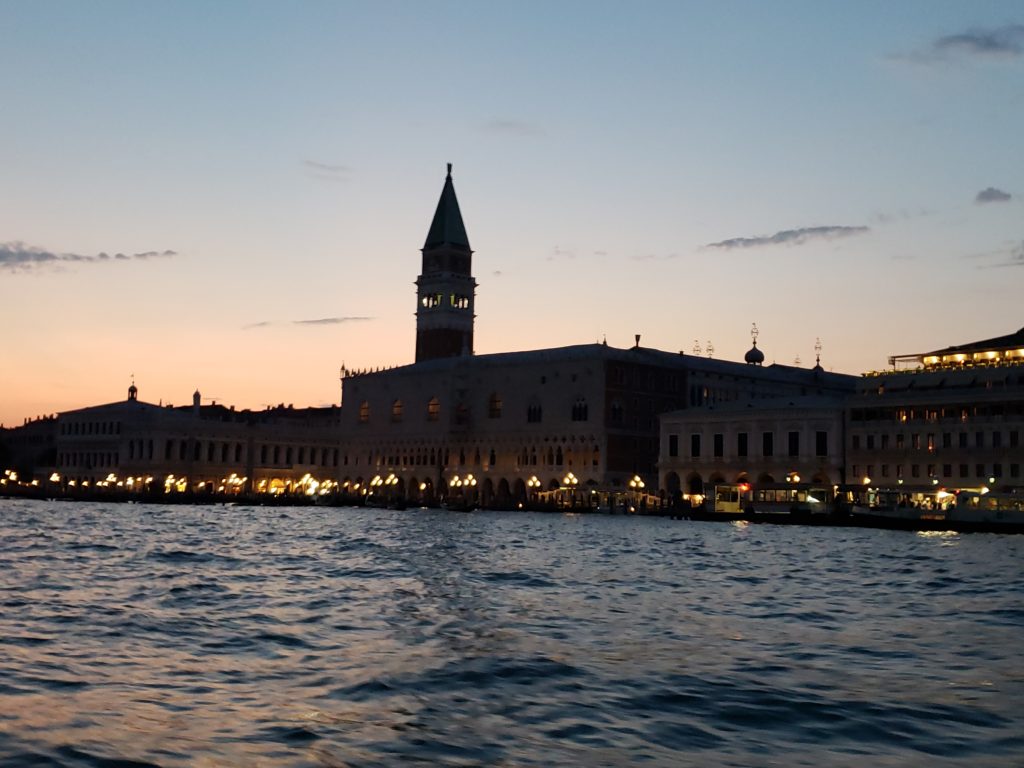
Sunset over San Marco

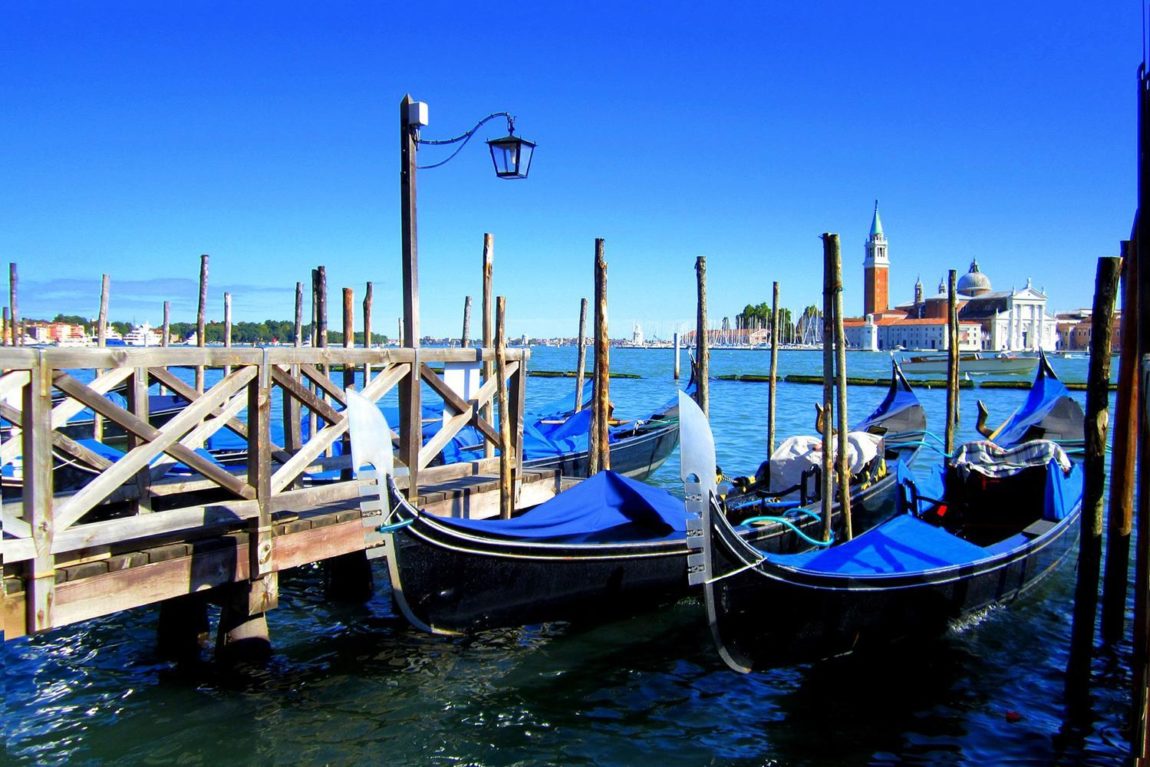
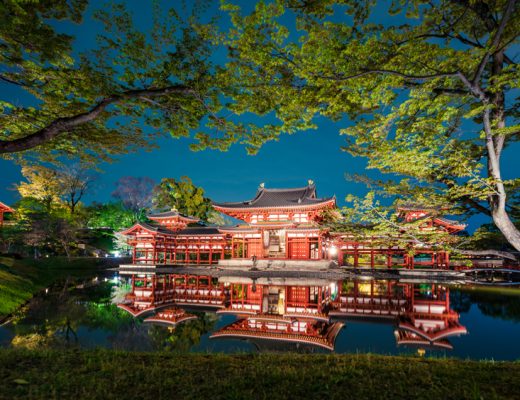
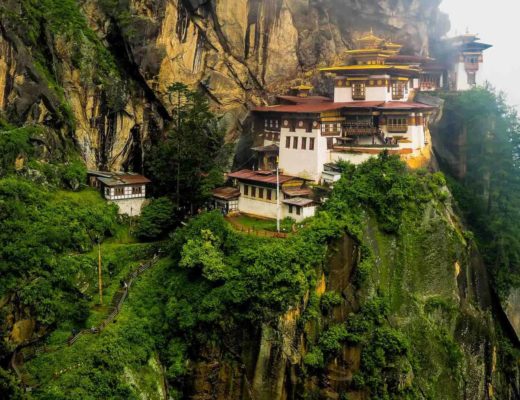
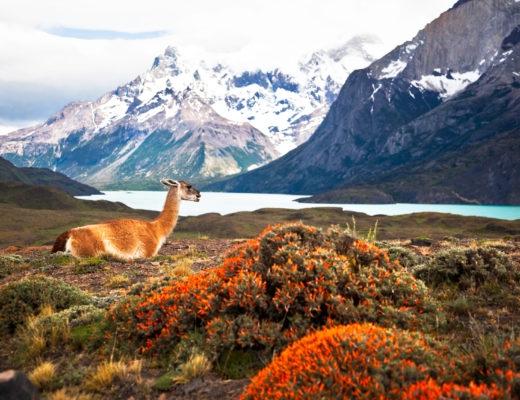
Perfect 5 Days in Venice, Italy (Part 2) - PointsTravels
October 9, 2018 at 4:18 pm[…] To Read Perfect 5 Days in Venice, Italy (Part 1)>CLICK HERE! […]